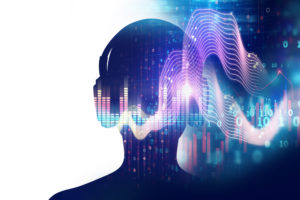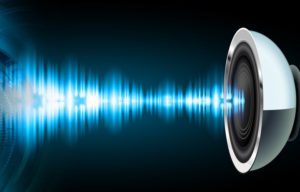
Hear the Music Behind Your Data

(PopTika/Shutterstock)
Every minute, Zoom hosts 208,333 participants, and Instagram users post 347,222 stories. Two platforms alone generate an incredible amount of data. Add in the fact that the internet reaches 4.57 billion people, and you realize the massive scale of data collection and analysis. The overabundance of facts and figures can overwhelm anybody trying to translate and understand emergent trends and patterns. But what if there were an easier way to comprehend the data companies generate?
We often view technology as tools that churn through mountains of gathered data so that we can develop insights to use in business. But what if they could be more? What if your technology could help you not just see your data, but also hear it? Data science is the key to hearing the music behind your data and helping you make smarter decisions and increase your team’s efficiency and productivity.
Data and Music: One and the Same
When faced with the troves of data piling up daily, companies can become quickly overwhelmed. They’re unsure of where to begin an analysis for connections between data points. Data science is about exploring and seeking patterns within data, so it plays a pivotal role in getting companies started with their analyses. Oftentimes, data scientists won’t even know the question before they explore; instead, they’ll use their technology to identify emerging trends and patterns.
Capturing and interpreting those patterns can provide tremendous benefits to a company. For example, data can help you catch bots that sign up and then spam your product. Human interaction with a product produces certain patterns — behavior forms a shape. You can compare that behavior shape to potentially anomalous datasets and determine if a user is human or not. That gives your team confidence in disconnecting potential bots from your system, which can save a fair amount of server space and money.
Music is all about patterns, too. Composing a musical piece requires understanding how notes and the spaces between them all fit together to create cohesive patterns. Every song you’ve ever heard has a particular waveform derived from unique patterns of notes and spaces. Unbelievable as it may seem, the data your company gathers about its product and patterns buried in that data can produce a musical-like pattern. And your data scientist serves as your composer.
Habits and Patterns
This musical pattern can be seen clearly in user habits with your product. By definition, a habit is a repeated behavior, and repeated behaviors have frequencies to them. If you brew a cup of tea every evening before bed, you’ve established a habit and have set a specific frequency to that habit.
Users’ interactions with products take a similar form. For instance, analyzing usage data can tell you the frequency at which users complete a certain task or fill out a specific item. These user functions also have certain expected flows: the user follows steps A, B and C to use the function correctly. If you plot the data points concerning the function in the right way, you get a waveform, which is how music is visualized.
User function waveforms can tell you plenty about your user experience. When users are doing well, it looks like a good waveform, one you could almost listen to. But when people enter a system and become confused, it generates a noisy waveform. It’s obvious they’re not quite sure what to do and how to navigate the product efficiently.
Data scientists can apply their knowledge and tools to help teams identify those bad waveforms quickly. Data illustrates a user’s peaks and valleys and determines the exact points where they trip up. That’s powerful knowledge for your teams. Product development knows where the issues live and can add them to their product roadmap. Customer success teams can tailor their outreach to those pain points and streamline how users interact with different product aspects. By hearing the user’s journey through waveforms, teams can better understand challenges and enact data-driven decisions to improve their user experience.
Invest In Data Science Early
Despite the power of data waveforms, we’re still at the beginning of integrating the value data science offers into the structure of technology companies. It’s tougher for data science to work well in a highly sales-oriented company with a large sales team. They employ some data in their work but generally don’t require the in-depth details data science delivers.
It’s an understandable position: after all, the value of adding another salesperson is easier to calculate. They’ll sell product, close new deals, and pay for themselves. But for companies focused on product growth, where big sales teams aren’t in the plan, they need excellent analytics to understand what’s really selling their software. In this instance, data science is much more like picking premium over regular gasoline at the pump — it’s about increasing efficiency.
Determining a data scientist’s immediate ROI is more difficult, but that’s because their benefit is diffused across the entire organization. Every team now relies more than ever on data to make smarter business decisions. Understanding the patterns behind data — including the musical waveforms created from them — leads to insights teams deploy to make everyone more efficient. That allows for a smaller number of people to make an outsized impact on their company. Hiring a data scientist means every team member performs like 1.1 people.
The earlier data science is introduced into a company, the more data gets baked into company culture. Introducing data science into the mix sooner lets your teams gain more experience interacting with data and supporting their decisions with data science’s findings. Over time, they may even see patterns emerge as well. They’ll start to hear the music your data scientist is conducting.
It’s rather visionary in terms of team building, but data science holds a lot of potential in building smarter and more agile teams. Technology can help you do that by looking beyond data as a simple tool. Rely on it as your musical partner and bring music to your data to uncover meaningful insights, no matter how much you start with.
About the author: Ben Smith is a data scientist at Boardable, an online board management portal that centralizes communication, document storage, meeting planning, and everything involved with running a board of directors. With a diverse background in data science and musical instruction at Indiana University-Purdue University Indianapolis, Ben brings an analytical mind to the Boardable team. He digs into customer behavior in the software platform to identify areas for product improvement and feature additions. An Alaska native, Ben resides in Indianapolis and is involved in various musical projects.
Related Items:
Making Sense of Sound: What Does Machine Learning Mean for Music?
Slicing and Dicing Music Data for Fun and Profit
Hadoop Helps Maintain Music Genome Project
































